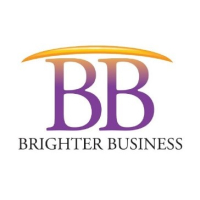How Has Workwear Evolved Over Time?
The basic purpose of workwear has essentially remained unchanged since the concept was created. It protects workers and/or makes them identifiable. In many other ways, however, workwear has changed dramatically over the years (and centuries). Here, Coreworkwear share their view of that evolution.
Pre-industrial-era workwear
Before the industrial revolution, work was primarily done by hand using tools that were very primitive by modern standards. This meant that workwear needed to be durable and protective. It also needed to be affordable for people on modest incomes.
Regular workers generally wore simple garments such as aprons, smocks and coveralls made from durable materials such as wool, cotton and leather. These garments were designed to be sturdy and hardwearing and could withstand the rigours of heavy manual work. Outdoor workers also wore gloves, hats and boots
Workers in certain trades developed early forms of PPE (personal protective equipment) specific to their trade. For example, blacksmiths wore leather aprons and gloves to protect against hot metal and sparks.
In some areas of work, workwear served to identify different types of workers. For example, in the healthcare industry, doctors typically dressed very differently from nurses.
Industrial-era workwear
The industrial revolution saw the emergence of factories. These both reflected and caused a significant shift from traditional crafts to standardised manufacturing. Workers in factories faced new hazards, such as machinery accidents, chemical exposure and excessive noise levels. This created a need for different types of workwear and different types of PPE.
As with the pre-industrial era, industrial-era workwear was designed to be functional and durable. Clothing was made from heavy-duty materials such as denim, canvas and leather and often featured reinforced stitching and rivets for added durability.
Workwear garments such as overalls, jackets and trousers were designed to be practical and protect workers from the hazards of their trade. They weren't necessarily comfortable and they certainly weren't stylish. They were highly standardised as they were generally made in factories rather than by hand.
In addition to clothing, workers also needed new forms of PPE designed to cope with the hazards of industrial environments. These generally included items such as goggles, gloves and earplugs.
Modern-era workwear
Modern-era workwear is workwear designed for use in post-industrial economies. These are economies which are driven by technology. They also tend to have a large service sector. In the UK, the modern era began around the mid-1970s or early 1980s. This period has been characterised by significant technological and social change. The former has often played a key role in the latter.
Technological advancements in workwear
One of the most significant technological advancements in workwear has been the development of high-performance fabrics. These fabrics are designed to be durable, breathable, moisture-wicking and resistant to stains and odours. This has led to the creation of workwear that is more comfortable and functional, allowing workers to perform their jobs more efficiently.
Another important technological advancement has been the integration of safety features into workwear. For example, workwear now includes reflective materials and high-visibility colours, making workers more visible in low-light conditions. Additionally, workwear can be equipped with safety harnesses, airbags and other safety devices to protect workers from falls and other hazards.
Technology has also played a role in the customization of workwear. With the use of 3D printing and other advanced manufacturing techniques, workwear can be tailored to fit individual workers' needs and preferences. This has led to the development of ergonomic workwear, which is designed to fit the wearer's body shape and reduce strain on the muscles and joints.
Specialisation of workwear
Advancements in technology, materials and manufacturing techniques have made it possible to create and produce highly customised designs. This has made it possible to develop workwear that precisely meets the specific requirements of different trades and professions.
In addition to improving functionality, modern workwear is now designed with comfort in mind. It can also be aesthetically pleasing and/or indicate the wearer's role (and standing) in an organisation.
The trend towards environmentally-friendly personalised workwear has also grown. Producers have developed clothing made from sustainable materials such as recycled polyester, organic cotton and bamboo. Opting for sustainable workwear and repurposing or recycling used workwear can help businesses reduce their environmental impact.
Stylish and comfortable workwear
In the modern era, physical safety is much less of a concern for most workers. This means that there is more scope to prioritise aesthetics. Even where safety is a concern, there is growing recognition that comfort matters too.
In fact, comfort can actually promote safety. Firstly, it encourages workers to wear the clothing they are supposed to wear. Secondly, it helps workers to move freely with minimum effort. It, therefore, helps to protect against fatigue, which is a major safety hazard.
Modern employers also tend to recognise that there is a strong link between comfort and productivity. In simple terms, workers generally need to be comfortable to be able to give all their focus to their task(s).
The trend towards stylish and comfortable workwear has also contributed to the blurring of lines between traditional workwear and casual wear. Many workers are now opting for clothing that can be worn both on the job and in their leisure time.
Workwear as a marketing tool
Workwear has become an increasingly popular marketing tool for businesses looking to build their brand and promote their products or services. By incorporating their logo or branding into workwear, businesses can create a professional and cohesive look for their employees and increase brand visibility.
In addition to promoting brand awareness, workwear can also be used to communicate a company's values and image. For example, clothing made from sustainable materials can communicate a commitment to environmental responsibility, while high-quality and well-designed clothing can communicate a commitment to professionalism and excellence.
Workwear can also have a positive impact on employee morale and job satisfaction. Clothing that is comfortable, functional and stylish can make employees feel more confident and proud to represent their company. This can lead to higher levels of engagement and productivity, as well as improved customer satisfaction.
Over recent years, the use of workwear as a marketing tool has become increasingly sophisticated. Advances in printing and embroidery technology have made it easier to create high-quality, customised designs that accurately represent a company's brand and image. Additionally, the rise of e-commerce platforms and online ordering systems has made it easier for businesses to order and distribute workwear to employees across multiple locations.
Ross Crayton is the Managing Director of Core Workwear who specialise in personalised and embroidered workwear.
Labour’s new Employment Rights Bill: challenges employers...
More Articles
The Value of a Sustainability Strategy in the Tender Process
Unlocking the Power of Raw Financial Data
Would you like to promote an article ?
Post articles and opinions on Professionals UK
to attract new clients and referrals. Feature in newsletters.
Join for free today and upload your articles for new contacts to read and enquire further.







